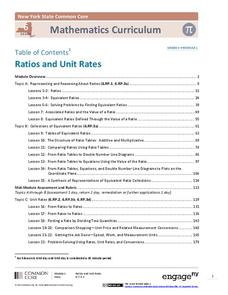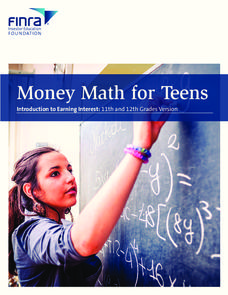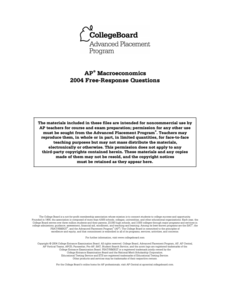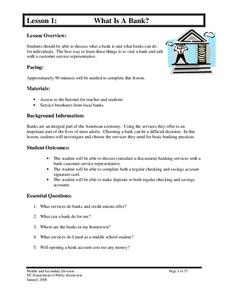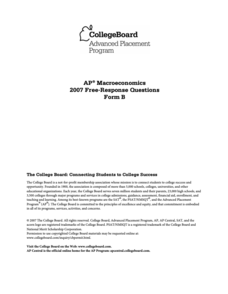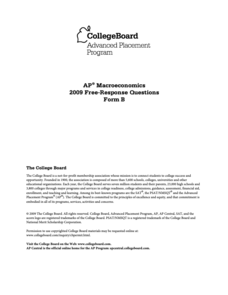Curated OER
Compounding with 100% Interest Rates
Your young economists will be amazed at the effect of compounding interest more frequently in this collaborative task about making sound financial choices. Learners are walked through the calculations of a couple of examples and then...
Houghton Mifflin Harcourt
Simple and Compound Interest
Your learners will get lots of practice calculating simple and compound interest by the end of this lesson. Simple explanations and examples lead learners through the concepts and steps of calculating simple and compound interest...
Practical Money Skills
Saving and Investing
You have to have money to make money, especially in the world of banking and investments. High schoolers learn about interest rates, saving and investment options, and ways to stay aware of their money's security and earning ability with...
EngageNY
Ratios and Unit Rates
This turn-key unit on ratios and unit rates walks through a 30-lesson unit on teaching proportional reasoning, with each lesson broken into detailed teaching notes and time allotments for all parts. An unbelievable resource when taken...
Council for Economic Education
Calculating Simple Interest
How much is owed? A calculated resource introduces the simple interest formula with a video that describes how to use it. Classmates then show what they know by answering questions within a simple interest worksheet.
Council for Economic Education
Loan Amortization - Mortgage
When you buy a home for $100,000, you pay $100,000—right? On the list of important things for individuals to understand, the lesson plan presents the concept of interest rates and loan amortization using spreadsheets and online sources....
West Contra Costa Unified School District
Interest and the Number e
Mary, Mary, quite continuously, how does your money grow? Uses examples to examine the difference between simple interest and compound interest, and to take a look at different rates of compounding. Learners explore what would happen as...
Carolina K-12
Personal Financial Literacy: Using Credit Wisely
What is credit, and what are its advantages and disadvantages for purchases? Your class members will learn about different types of loans, such as student and mortgage, how interest factors into credit use, credit reports, and ultimately...
Federal Reserve Bank
The Fed’s Toolbox
This lesson is packed with instructional material and activities on the Federal Reserve System, monetary policy, and the relationship between bank reserves, interest rates, employment, and price stability.
National Research Center for Career and Technical Education
Business Management and Administration: Compound Interest - A Millionaire's Best Friend
Many math concepts are covered through this resource: percentages, decimals, ratios, exponential functions, graphing, rounding, order of operations, estimation, and solving equations. Colorful worksheets and a link to a Google search for...
SaveandInvest.org
Introduction to Earning Interest: Grades 9-10
Does your bank pay you for allowing them to hold your money? The lesson covers three different ways your money can make money. Topics include certificates of deposit, statement savings accounts, and money market accounts.
SaveandInvest.org
Introduction to Earning Interest: Grades 11-12
Does your bank pay you for allowing them to hold your money? Class members investigate three different ways money can make more money. Topics include certificates of deposit, statement savings accounts, and money market accounts. This...
Visa
Road Rules: Researching and Buying a Car
How do the loan principal, interest rate, and term all factor into a monthly car payment? Introduce your class to some of the key steps and considerations of obtaining a loan and purchasing a car.
Mathed Up!
Compound Interest and Depreciation
Discover how to find the value of an interest-bearing account. Individuals watch a video to learn how to use exponential functions to model compound interest. After the video, they complete a worksheet of problems on compound interest.
Federal Reserve Bank
The Story of the Federal Reserve System
Prevent the Federal Reserve System from becoming a dry topic for your middle and high schoolers by using an informative, engaging resource! The cartoon takes your class on a journey with aliens from the planet of Novus to observe the...
CK-12 Foundation
APR and APY: APR vs. APY
Who wins the battle of the interest rates? Scholars use an interactive to investigate three different bank rates. Comparing APR and APY lets them see how nominal and effective rates differ.
College Board
2002 AP® Macroeconomics Free-Response Questions
Imagine the United States is experiencing an unusually high unemployment rate. What options does the federal government have to kick-start the economy? Learners consider the question with a structured prompt. Other questions examine...
College Board
2006 AP® Macroeconomics Free-Response Questions
Interest rates and unemployment rates help gauge the health of an economy. Learners consider various factors that affect economic indicators using authentic materials from College Board. Problems also include practice creating graphs.
College Board
2004 AP® Macroeconomics Free-Response Questions
The Federal Reserve guides banking policy for the country. Learners consider the effects of its force using authentic materials from College Board. Other practice problems examine the connection of national savings rates and interest...
College Board
2013 AP® Macroeconomics Free-Response Questions
While inflation is an expected part of the economy, how does it affect other factors, such as loan and interest rates? Learners consider questions such as these in authentic College Board materials. Other practice questions include...
North Carolina Department of Public Instruction
What Is A Bank?
You're never too young to learn about banking and personal finance. Use a set of seven banking lessons to teach middle schoolers about checking and savings accounts, interest rates, loans and credit cards, and safety deposit boxes.
College Board
2001 AP® Macroeconomics Free-Response Questions
The European Union has had a profound effect on world economic dynamics. A structured inquiry investigates its impacts on global interest rates. Other authentic testing materials from College Board explore banking reserve requirements...
College Board
2007 AP® Macroeconomics Free-Response Questions Form B
Australia and New Zealand are close trading partners. So what happens when one country goes into a recession? Learners consider the impact using authentic materials from College Board. Other practice questions include examinations of the...
College Board
2009 AP® Macroeconomics Free-Response Questions Form B
If a country is facing rising unemployment, should the president ride out the trend or decrease income taxes? Scholars confront two competing policy recommendations and must decide what to do in a practice exam from College Board. Other...
Other popular searches
- Simple Interest Rates
- Interest Rates Credit Cards
- Compounded Interest Rates
- Interest Rates 2007
- Credit Card Interest Rates
- Computing Interest Rates
- Determining Interest Rates
- Interest Rates Exponential
- Interest Rates Kwl
- Interest Rates "Case Study"
- Interest Rates Kl
- Interest Rates Case Study





